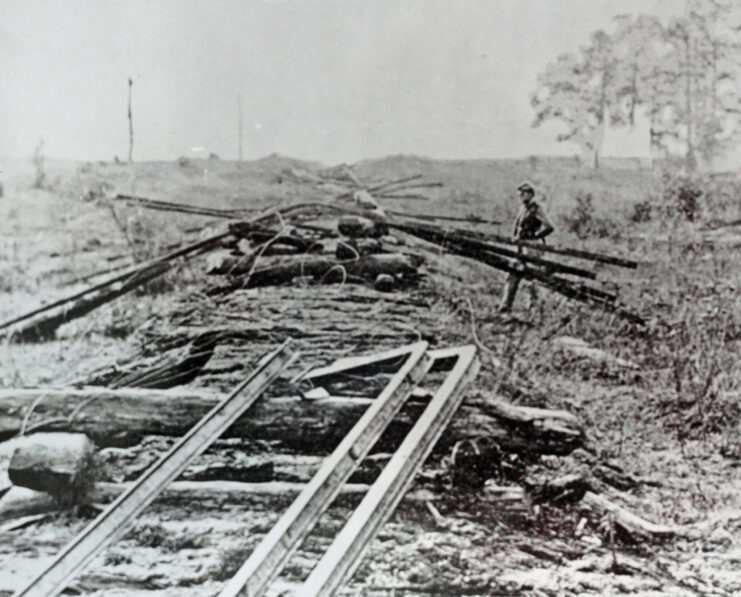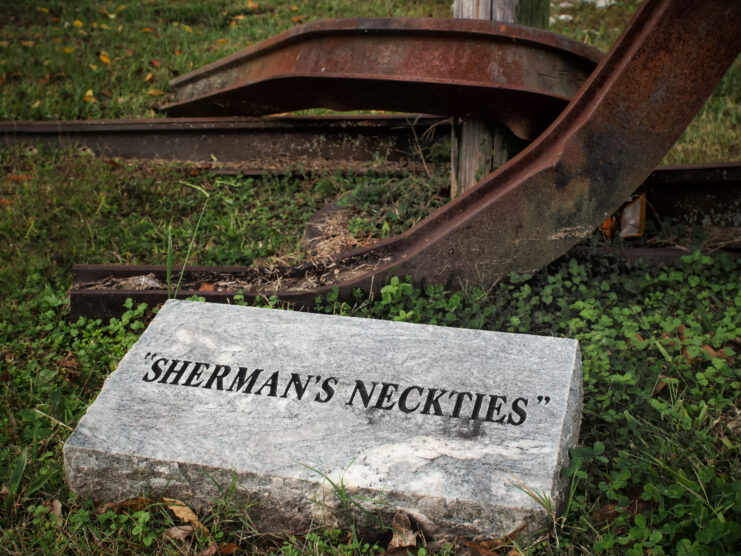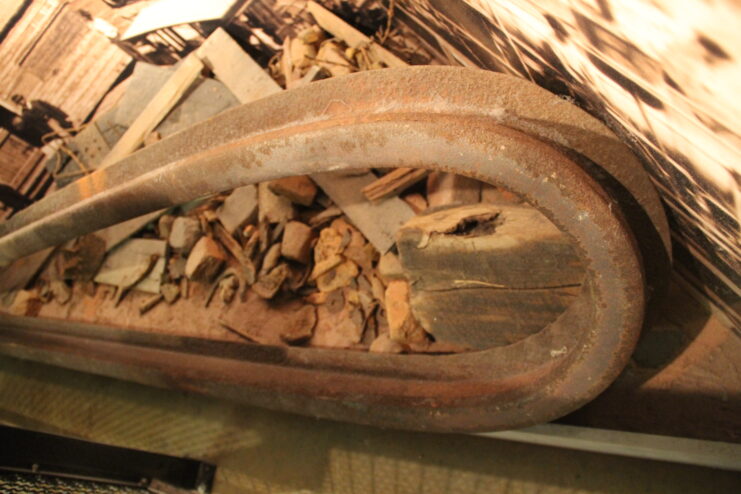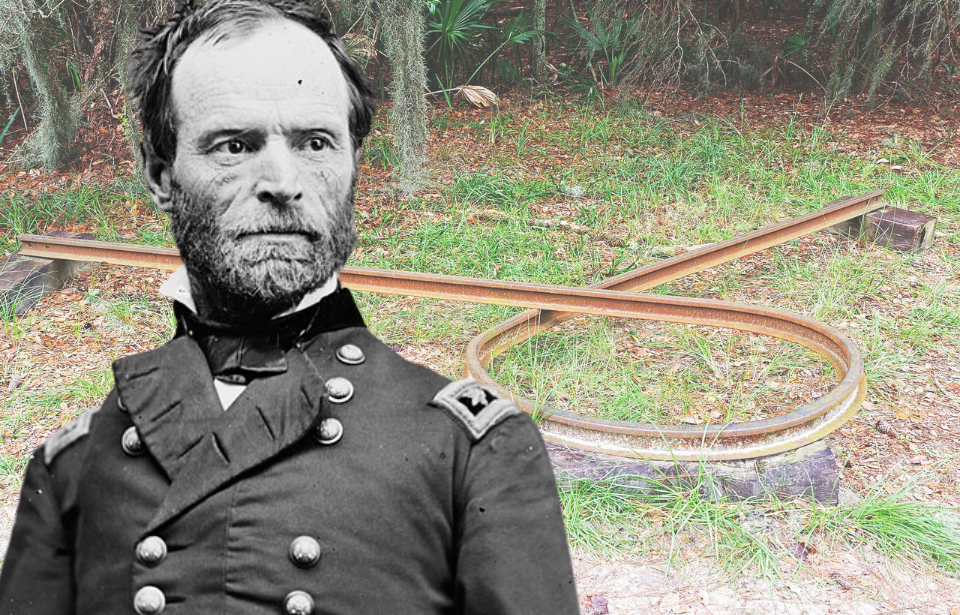Sherman’s Neckties, also known as Sherman’s Bowties, Jeff Davis’s Neckties, and Sherman’s Hairpins, were techniques used by Union forces to sabotage railroads during the American Civil War. Named for Maj. Gen. William Tecumseh Sherman, who made the method widely known, these tactics aimed to weaken the Confederacy’s access to strategic and economic resources by focusing on critical sections of the railroad.
The Union Army needed to slow down the Confederates

Toward the conclusion of the Civil War, the Union sought a strategy to immobilize the Confederates, identifying their vulnerable point as their scarce iron resources and foundries. During the Atlanta Campaign in the summer 1864, Sherman directed the Union Army to concentrate on dismantling the enemy’s rail infrastructure to sever Confederate troops from their supplies.
The order Sherman issued on July 18, 1864 stated:
“In case of the sounds of serious battle he will close in on General Schofield, but otherwise will keep every man of his command at work in destroying the railroad by tearing up track, burning the ties and iron, and twisting the bars when hot. Officers should be instructed that bars simply bent may be used again, but if when red hot they are twisted out of line they cannot be used again.
“Pile to ties into shape for a bonfire, put the rails across, and when red hot in the middle, let a man at each end twist the bar so that its surface become spiral. General McPherson will dispatch General Garrard’s cavalry eastward along the line of the railroad to continue the destruction as far as deemed prudent.”
This marked the beginning of Sherman’s Neckties. Within just three days, only one railroad line remained operational in Atlanta.
Two ways to make Sherman’s Neckties

Simply lifting the railroad tracks wasn’t enough to disrupt Confederate supply lines, as the enemy could easily repair and restore them. Union forces were unable to completely destroy the rails, which allowed the Confederates to make quick repairs.
In response, Sherman ordered his troops to remove the rails from the crossties and place them vertically over a bonfire. As the rails became hot, their weight caused the ends to bend. However, this approach was only partly successful, as the slight bends could still be straightened by Confederate repair teams.
The soldiers then devised a more permanent method to make the rails unusable. After heating them in the fire, they twisted the softened metal around a tree, bending the rails until the ends overlapped. These twisted, tree-wrapped rails became famously known as “Sherman’s Neckties.”
Lacking the resources to melt down and forge new rails or the manpower to lay fresh tracks, the Confederates were unable to fix the large amounts of damage.
Meridian Campaign of 1864

The town of Meridian, located in the eastern part of Mississippi, was a strategic position for the Confederate Army. Three railroads intersected the town, and it served as a storage and distribution center for agricultural products destined for the Southern forces.
Sherman knew this was an important position and wanted to intercept and destroy the enemy’s access to the railroads. If they were successful, the Confederates would be neutralized as the Union forces moved toward the Mississippi River during their March to the Sea Campaign.
On February 3, 1864, Union soldiers began the campaign “to break up the enemy’s railroads at and about Meridian, and to do the enemy as much damage as possible in the month of February, and to be prepared by the 1st of March to assist General [Nathaniel] Banks in a similar dash at the Red River country.”
When Sherman’s men arrived in Meridian on February 14, they immediately began prying up the railroad tracks, leaving only Sherman’s Neckties in their wake. They completed their objective and returned to Vicksburg by March 6. It took the Confederates 26 days to restore the rails.
More from us: The Second Battle of Fort Wagner Proved the 54th Infantry Regiment Had the Chops
Want to become a trivia master? Sign up for our Today In History newsletter!
The sabotage put the South’s rail lines out of commission for nearly a month, critically impacting their position in the war and proving that Sherman’s Neckties were an effective tactic.
